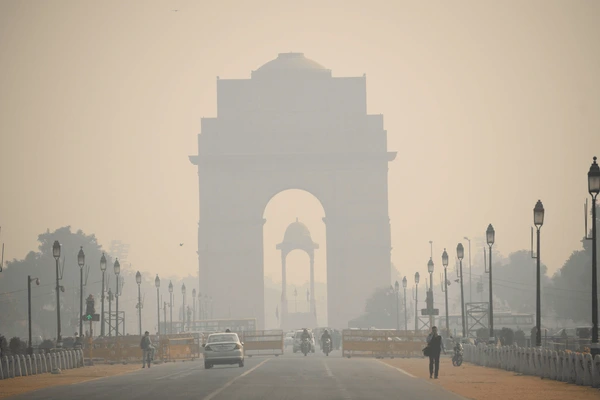Flight operations at Delhi’s Indira Gandhi International Airport (IGI) faced delays on February 11 due to low visibility caused by thick fog. The adverse weather conditions disrupted the schedule of numerous flights, prompting the airport authorities to issue advisories for passengers. In a statement, the airport management emphasized that while landing and takeoffs were continuing, flights that were not CAT III compliant might experience delays. Passengers were urged to stay in touch with their respective airlines for updated flight information, and any inconvenience caused was deeply regretted.
The weather department provided further insights into the prevailing conditions, forecasting clear skies with mist for Sunday morning. The maximum and minimum temperatures were anticipated to hover around 25 degrees Celsius and 7 degrees Celsius, respectively. However, the national capital was likely to witness rain on Valentine’s Day, according to predictions by RWFC Delhi, with a possibility of very light rain or drizzle on February 14.
Meanwhile, the Air Quality Index (AQI) in Delhi remained a cause for concern, with the overall AQI recorded at 325, categorized as ‘very poor’ according to data from the Central Pollution Control Board (CPCB). Various areas across the city reported high levels of pollution, with AQI readings ranging from 324 to 386. These included NSIT Dwarka, RK Puram, Punjabi Bagh, Pusa, IGI Airport, Jawaharlal Stadium, Nehru Nagar, Dwarka Sector 8, and Jahangirpuri. The deteriorating air quality underscored the ongoing challenges faced by the city in combating pollution and its detrimental effects on public health.
In addition to the weather and pollution concerns, the India Meteorological Department (IMD) issued a rainfall alert for several parts of Central and East India until February 14. Light rainfall activity was predicted over regions such as East Madhya Pradesh, Vidarbha, Chhattisgarh, Odisha, south Uttar Pradesh, south Bihar, and Jharkhand. The weather department also anticipated a rise in minimum temperatures by 3-5 degrees Celsius over various parts of Northwest, Central, East, and West India during the next four days.
Further, IMD forecasted isolated to scattered light rainfall activity over East Madhya Pradesh, Vidarbha, Chhattisgarh, and Odisha from February 10 to 13, and over south Uttar Pradesh, south Bihar, Jharkhand, and Gangetic West Bengal from February 12 to 14. Additionally, light isolated rainfall was expected over Telangana on February 10 and 11.
Moreover, IMD highlighted the possibility of isolated light intensity thunderstorms accompanied by lightning over East Madhya Pradesh, Vidarbha, and Chhattisgarh from February 11 to 12, and over Bihar, Jharkhand, and Gangetic West Bengal from February 13 to 14. These weather forecasts underscored the need for residents and authorities to remain vigilant and take necessary precautions to mitigate any potential risks associated with adverse weather conditions.
The ongoing challenges posed by weather-related disruptions, coupled with environmental concerns such as air pollution, highlight the importance of proactive measures and effective management strategies. As authorities continue to monitor the situation and provide updates, it remains crucial for individuals to stay informed and adhere to safety guidelines to ensure their well-being and minimize disruptions to daily activities.










